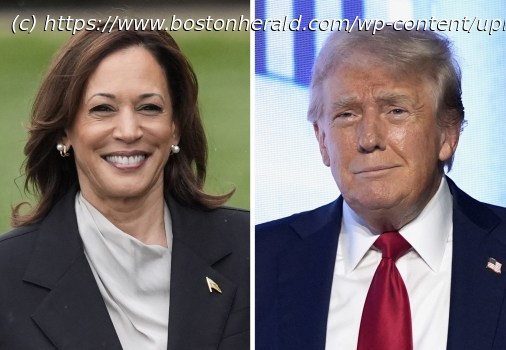This could be the first presidential election where the candidates are crafting competing visions on how to guide American leadership over the fast-developing technology.
Two days after President Joe Biden signed a sweeping executive order on artificial intelligence last year, Vice President Kamala Harris brought the wonky document to a global AI summit, telling an international audience what set the U.S. apart in its approach to AI safety.
In an event meant to address the potential catastrophes posed by futuristic forms of AI, Harris made waves by pivoting to present-day concerns — and the need to codify protections quickly without stifling innovation.
“When a senior is kicked off his healthcare plan because of a faulty AI algorithm, is that not existential for him?” Harris told a crowd in London last November. “When a woman is threatened by an abusive partner with explicit deepfake photographs, is that not existential for her?”
Now, she’s running for president and her chief opponent, former President Donald Trump, has said he wants to “cancel” the Biden order. Trump’s running mate, Ohio Sen. JD Vance, also brings his own views on AI, which are influenced by his ties to some Silicon Valley figures pushing to limit AI regulation.
AI’s growing visibility in everyday life has made it a popular discussion topic but hasn’t yet elevated it to a top concern for American voters. But this could be the first presidential election where the candidates are crafting competing visions on how to guide American leadership over the fast-developing technology.
Here are the candidates’ records on AI:Trump’s approach
Biden signed his AI executive order last Oct. 30, and soon after Trump was signaling on the campaign trail that, if re-elected, he’d do away with it. His pledge was memorialized in the platform of this month’s Republican National Convention.
“We will repeal Joe Biden’s dangerous Executive Order that hinders AI Innovation, and imposes Radical Leftwing ideas on the development of this technology,” says Trump’s platform. “In its place, Republicans support AI Development rooted in Free Speech and Human Flourishing.”
The Trump campaign didn’t respond to a requests for more details.
Trump didn’t spend much time talking about AI during his four years as president, though in 2019 he became the first to sign an executive order about AI. It directed federal agencies to prioritize research and development in the field.
Before that, tech experts were pushing the Trump-era White House for a stronger AI strategy to match what other countries were pursuing. In 2017, not long before Google quietly introduced a research breakthrough helping to set the foundation of the technology now known as generative AI, then-Treasury Secretary Steven Mnuchin brushed aside concerns about AI displacing jobs, saying that prospect was so far in the future that “it’s not even on my radar screen.






